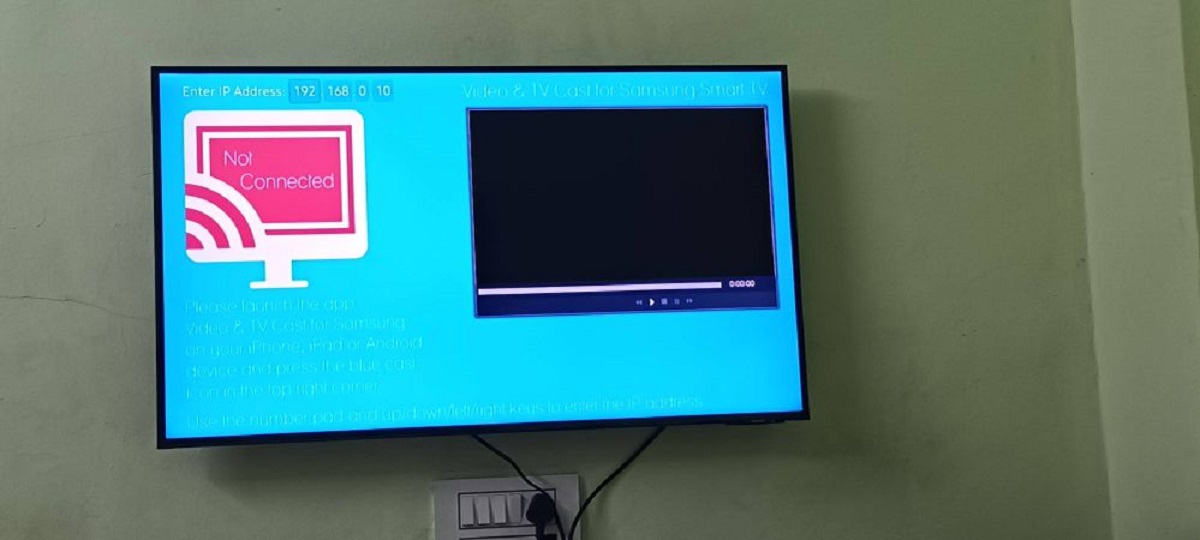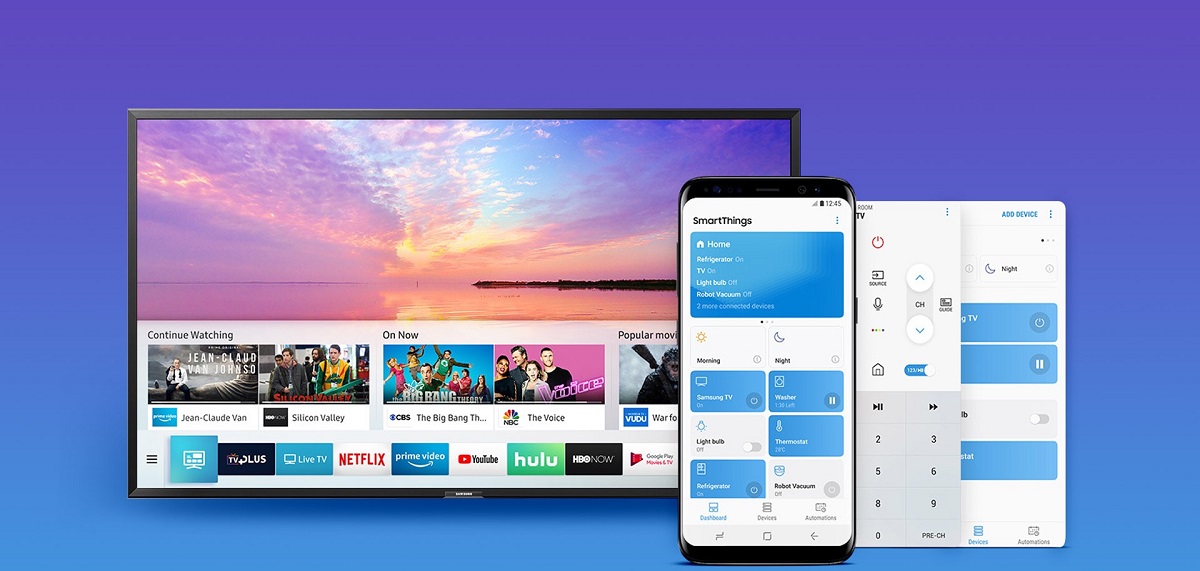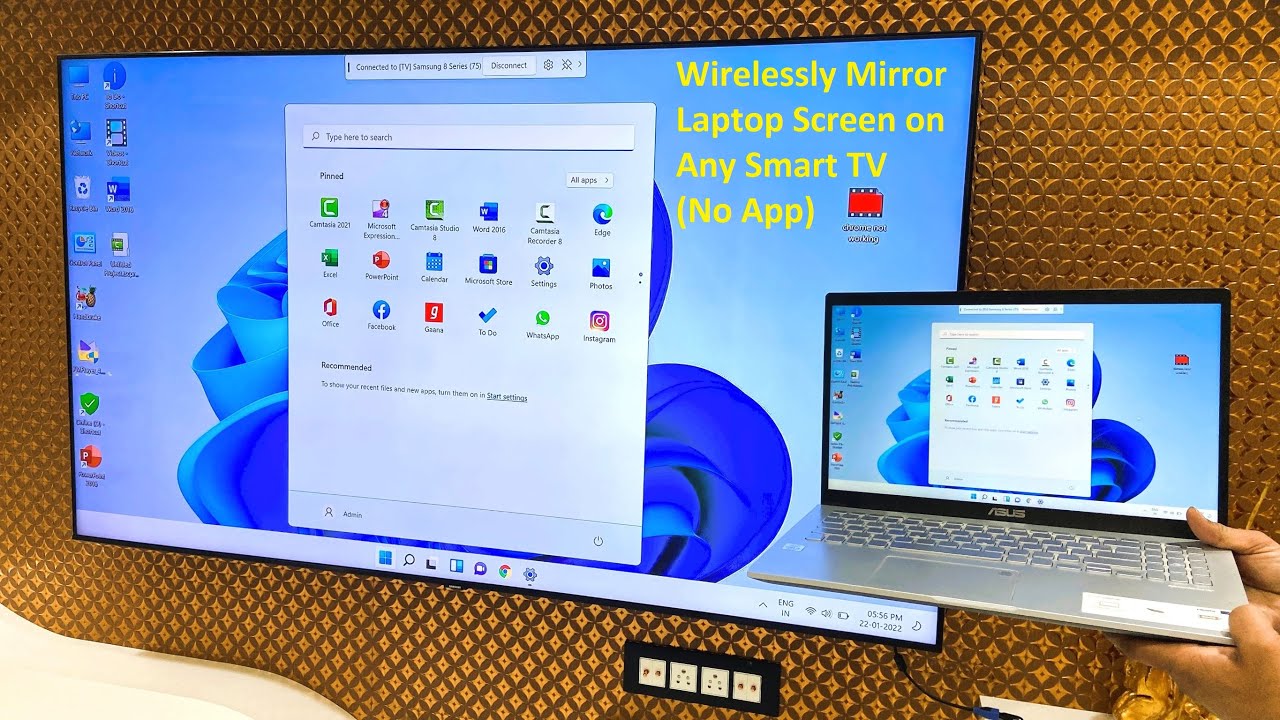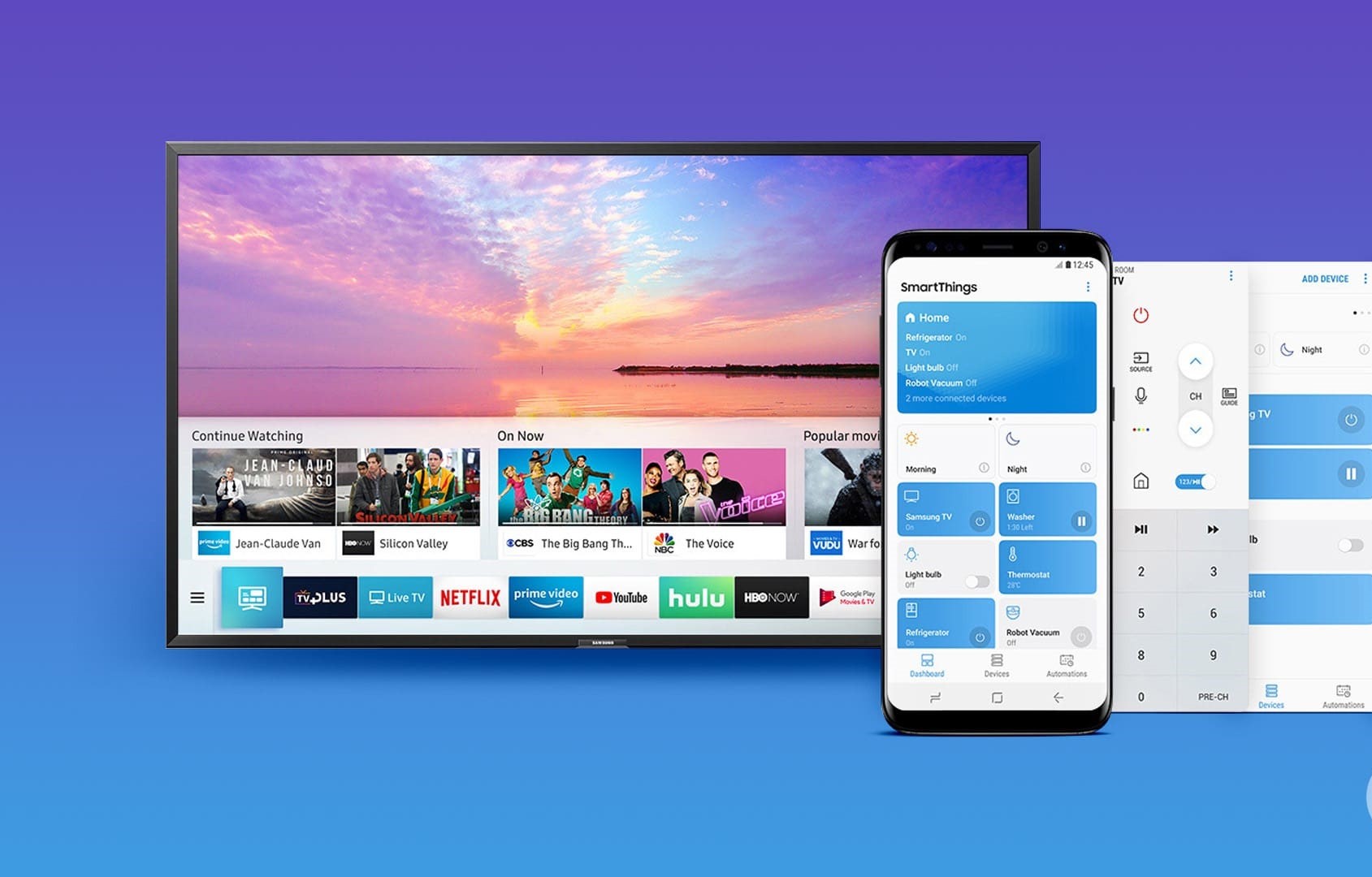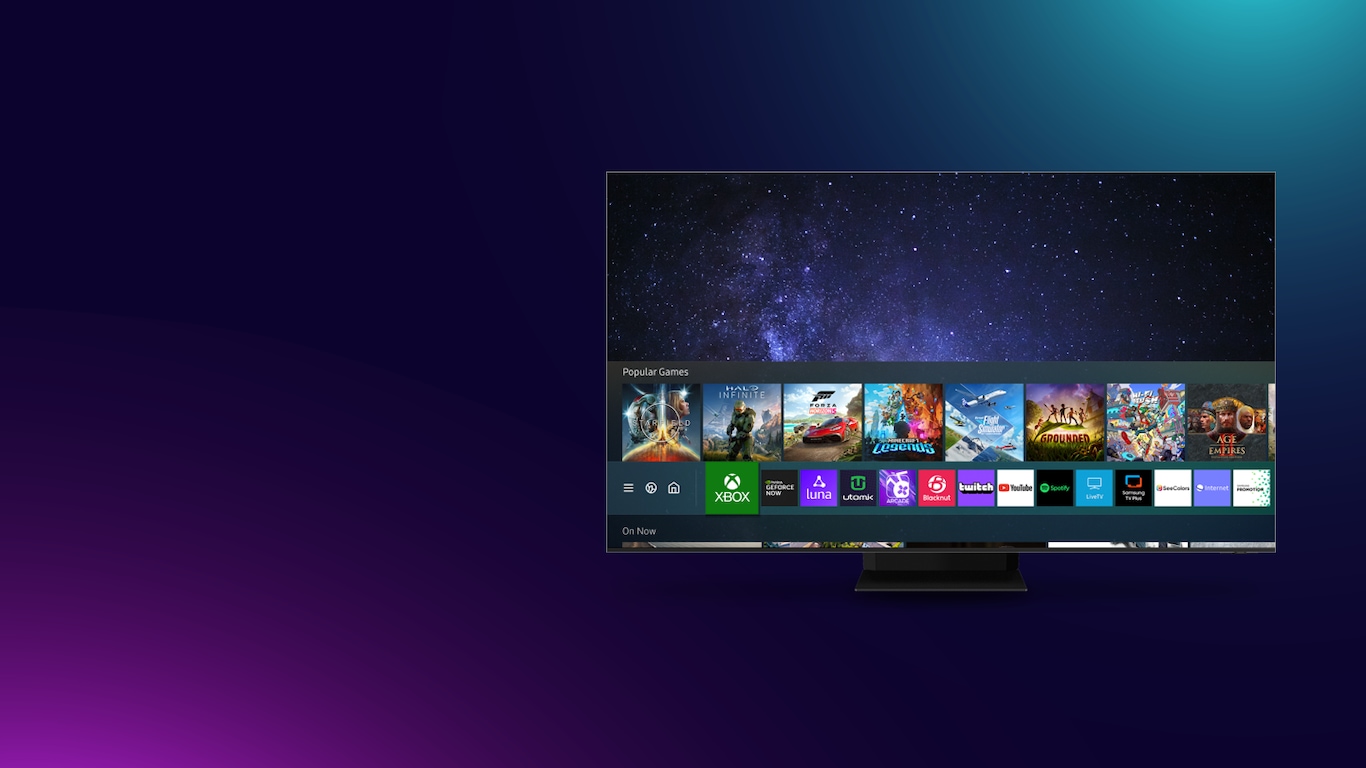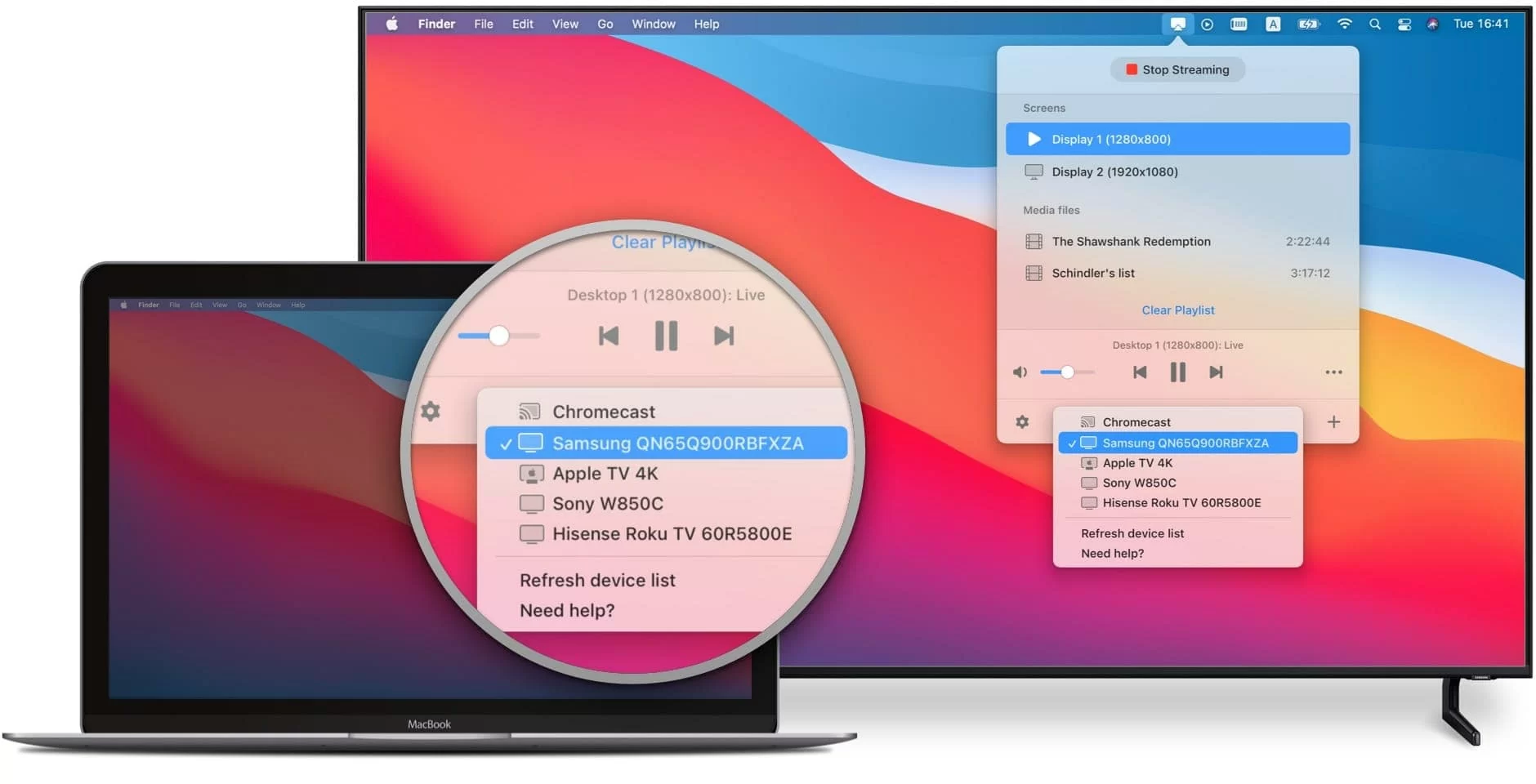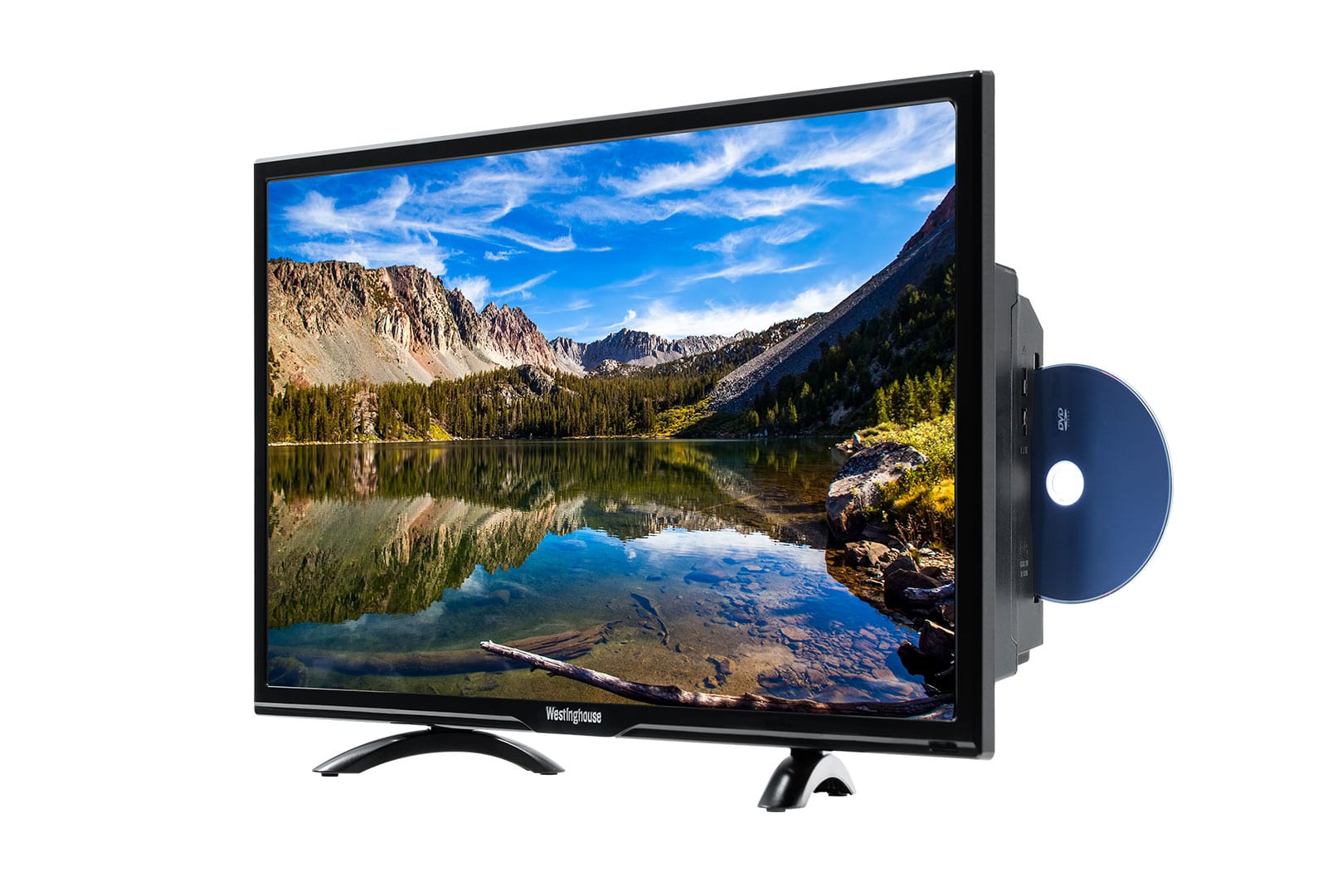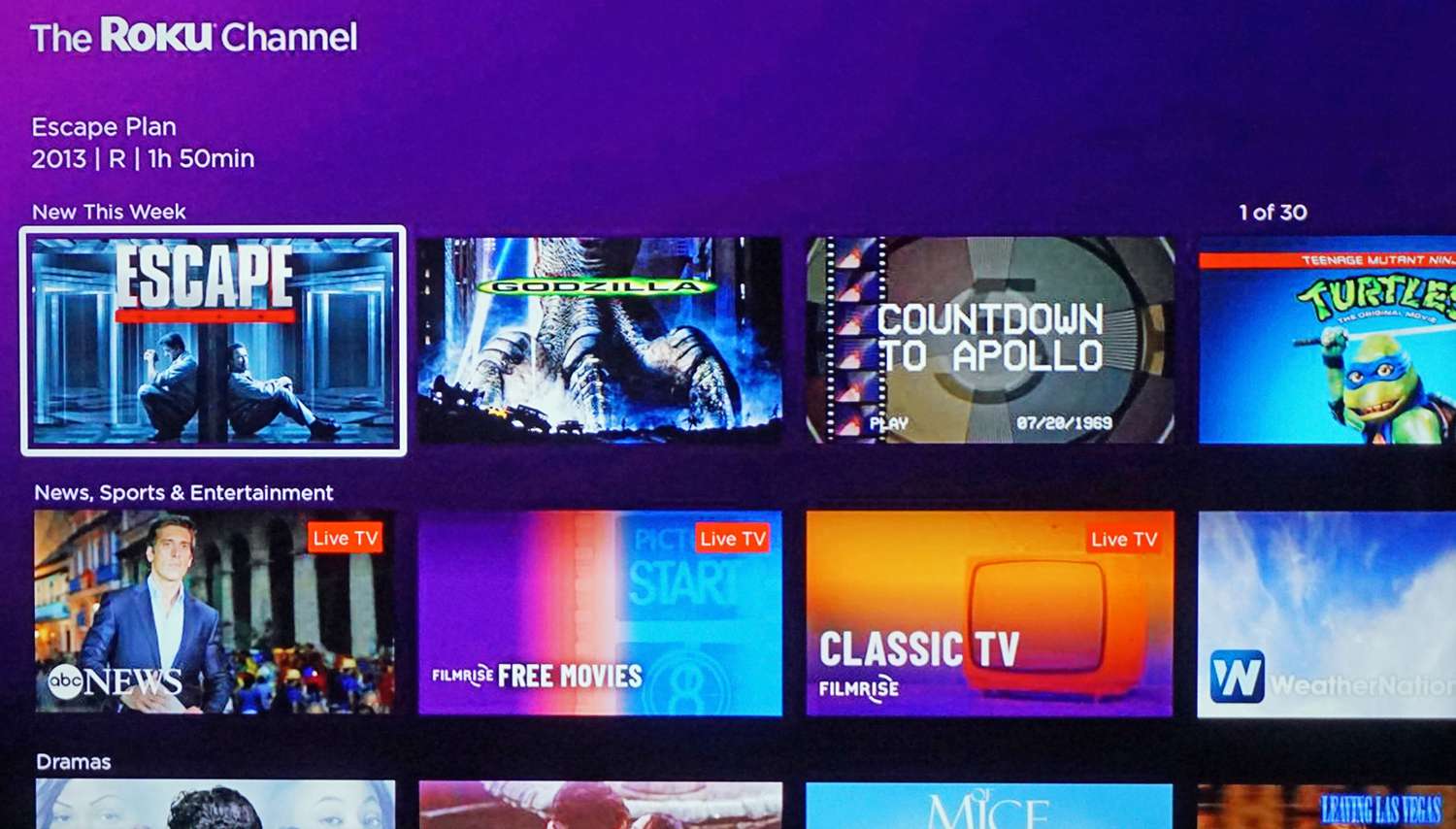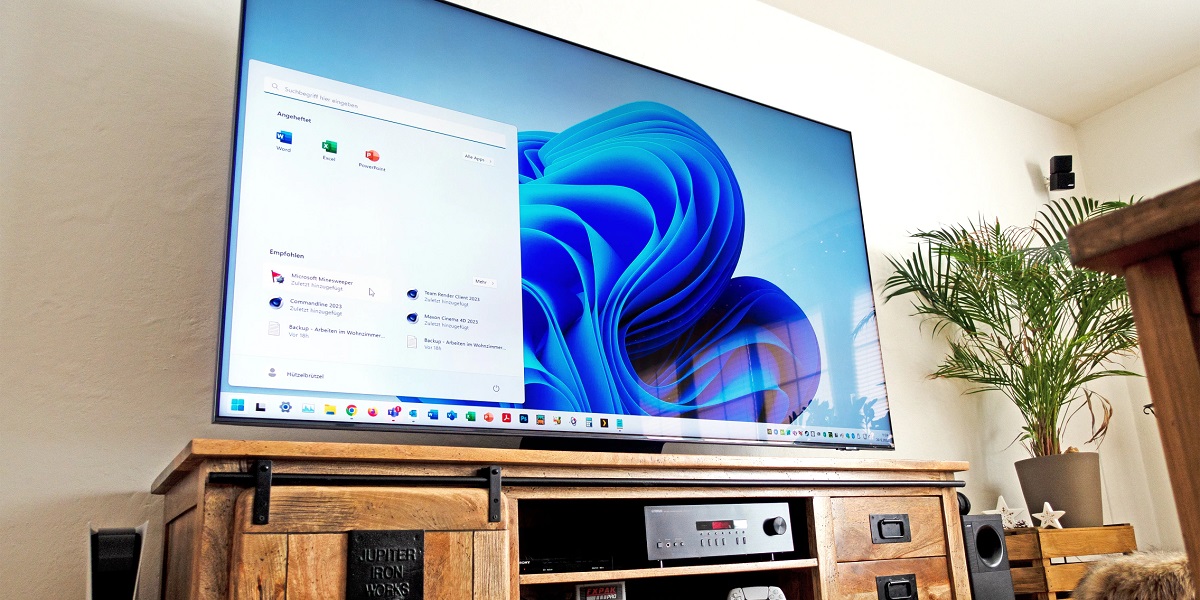Introduction
Welcome to the world of Samsung Smart TVs, where you can enjoy a vast array of entertainment options right from the comfort of your living room. While these smart TVs offer a range of built-in apps and streaming services, you may occasionally find the need to cast content from your personal devices onto the larger screen.
Screen casting, also known as screen mirroring or simply casting, allows you to display the content from your smartphone, tablet, or computer onto your Samsung Smart TV. Whether you want to share photos, videos, presentations, or even stream your favorite movies and TV shows, casting provides a seamless and convenient way to do so.
In this guide, we will walk you through the process of casting to your Samsung Smart TV, whether it be from a smartphone, tablet, or computer. Additionally, we will discuss the benefits and reasons why you might want to consider casting, as well as provide troubleshooting tips for common casting issues that you may encounter.
So, if you are ready to elevate your viewing experience and take full advantage of your Samsung Smart TV, let’s dive into the world of screen casting!
What is screen casting?
Screen casting, also known as screen mirroring, is the process of wirelessly displaying the content from your personal devices onto a larger screen. It allows you to mirror everything that is happening on your smartphone, tablet, or computer onto your Samsung Smart TV, creating a seamless and immersive viewing experience.
When you cast your device’s screen to your Samsung Smart TV, you can share photos, videos, presentations, and even stream content from various apps or websites directly onto the big screen. This means that you can enjoy your favorite movies, TV shows, and videos with friends and family, all while enjoying the comfort and convenience of a larger display.
Screen casting works by establishing a wireless connection between your device and your Samsung Smart TV. This connection can be established through technologies such as Miracast, Chromecast, Apple AirPlay, or Samsung Smart View.
While the specific methods may vary depending on your device and TV model, the overall process of screen casting involves transmitting the audio and video signals from your device to the TV wirelessly. The TV then recreates the content on its display, allowing you to see and hear everything that is happening on your device.
One of the key benefits of screen casting is that it enables you to enjoy a larger screen for content consumption or sharing. Whether you want to showcase a photo slideshow, deliver a business presentation, or simply relax and watch a movie with friends, screen casting provides a convenient and versatile way to do so.
Furthermore, screen casting allows you to take advantage of the superior audio and video capabilities of your Samsung Smart TV. The larger screen size, enhanced resolution, and immersive sound systems of smart TVs can greatly enhance your viewing experience, making screen casting an ideal option for entertainment enthusiasts.
Now that we understand what screen casting is and the advantages it offers, let’s explore why you might want to consider casting your Samsung Smart TV in the next section.
Why would you want to cast your Samsung Smart TV?
There are several compelling reasons why you might want to cast your Samsung Smart TV. Let’s take a closer look at some of the key benefits and scenarios where screen casting can enhance your entertainment experience:
1. Share multimedia content: Screen casting allows you to effortlessly share photos, videos, and other multimedia content from your smartphone or tablet onto the big screen. Whether you want to relive cherished memories with family and friends or showcase your latest vacation photos, casting provides a convenient way to share your content in a visually stunning manner.
2. Stream your favorite movies and shows: While Samsung Smart TVs come loaded with a wide range of streaming apps, you may occasionally come across content that is only available on specific websites or apps on your smartphone or computer. By casting your device’s screen to your TV, you can stream your favorite movies and shows from these platforms directly onto the larger display, providing a more immersive and enjoyable viewing experience.
3. Conduct business presentations: If you need to deliver a business presentation or showcase your work to a larger audience, casting your device’s screen to your Samsung Smart TV can be incredibly useful. Instead of relying on a small laptop or projector screen, casting allows you to present your work on a bigger, more visible display, ensuring that everyone in the room can easily see and follow along.
4. Enjoy gaming on the big screen: Gamers can take their gaming experience to the next level by casting their smartphone or tablet screen to their Samsung Smart TV. Whether you enjoy mobile gaming or want to stream gameplay from your computer, casting allows you to play your favorite games on a larger screen, immersing yourself in the action and enhancing the overall gaming experience.
5. Collaborate and brainstorm: If you’re working on a group project or need to collaborate with others, screen casting can facilitate seamless collaboration and brainstorming sessions. By casting your device to the TV, everyone can easily view and contribute to the discussion, making it easier to share ideas, review documents, and work together more effectively.
These are just a few examples of why you might want to cast your Samsung Smart TV. Whether it’s for entertainment, productivity, or convenience, screen casting offers a versatile and convenient way to make the most of your smart TV and personal devices.
Checking if your Samsung Smart TV supports screen casting
Before you start casting your devices to your Samsung Smart TV, it’s crucial to check if your TV model supports screen casting. While most modern Samsung Smart TVs support casting, it’s always a good idea to double-check to ensure compatibility. Here’s how you can do it:
1. Refer to the user manual: The user manual that came with your Samsung Smart TV is a valuable resource for learning about its capabilities and features. Look for information on screen casting or mirroring in the manual to see if your TV supports this function.
2. Check the TV settings: Navigate through the settings menu on your Samsung Smart TV and look for options related to screen casting or mirroring. Depending on your TV model, this option may be located under the connectivity or network settings. If you find the casting option, it’s a clear indication that your TV supports screen casting.
3. Search online: If you don’t have access to the user manual or can’t find the casting option in the TV settings, you can search online using your TV model number. Visit the official Samsung website or other reliable sources to find detailed specifications for your TV model. Look for information on screen casting compatibility to determine if your TV supports this feature.
4. Use the SmartThings app: Samsung offers the SmartThings app, which allows you to control and manage your Samsung Smart TV and other connected devices. Download the app to your smartphone or tablet and follow the setup instructions. The app should automatically detect if your TV supports screen casting and provide you with the necessary options.
5. Consult customer support: If you’re still unsure about whether your Samsung Smart TV supports screen casting, you can contact Samsung’s customer support for assistance. Reach out to them via phone, email, or live chat and provide them with your TV model number. They will be able to confirm whether your TV supports casting or help troubleshoot any compatibility issues.
By following these steps, you can determine if your Samsung Smart TV is compatible with screen casting. Once you have confirmed compatibility, you can proceed with connecting your devices and experiencing the benefits of casting content onto the big screen.
Connecting your Samsung Smart TV to your device
Now that you’ve confirmed that your Samsung Smart TV supports screen casting, it’s time to connect your device to the TV. The exact steps may vary depending on your device and TV model, but the following general guidelines will help you get started:
1. Ensure both devices are connected to the same network: For screen casting to work properly, your Samsung Smart TV and the device you want to cast from (e.g., smartphone, tablet, or computer) must be connected to the same Wi-Fi network. Ensure that both devices are connected to the same network before attempting to establish a connection.
2. Enable screen mirroring on your Samsung Smart TV: On your Samsung Smart TV, navigate to the settings menu and look for the screen mirroring or casting options. Enable this function to allow other devices to connect and mirror their screens on the TV.
3. Find the screen mirroring feature on your device: On your smartphone, tablet, or computer, open the settings menu or control center (varies by device) and look for the screen mirroring or casting option. Tap on this option to initiate the search for available devices.
4. Select your Samsung Smart TV: In the list of available devices, you should see your Samsung Smart TV listed. Tap or click on it to establish a connection. You may be asked to enter a pin or confirm the connection on both the device and the TV.
5. Wait for the connection to be established: Once you’ve selected your Samsung Smart TV, both devices will attempt to establish a connection. This process may take a few moments, so be patient and wait for the devices to successfully connect.
6. Start screen casting: After the connection is established, you can start screen casting from your device to your Samsung Smart TV. Depending on your device, you may have control options to adjust the display settings, audio output, or even choose specific content to cast.
Remember that the steps outlined above are general guidelines, and the specific process may vary depending on the device and TV model you are using. If you encounter any difficulties, refer to the user manual of your Samsung Smart TV or consult the support resources provided by Samsung.
Now that your devices are connected, you can enjoy casting your favorite content onto the larger screen of your Samsung Smart TV. Whether it’s streaming movies, sharing photos, or conducting presentations, screen casting enhances the overall viewing experience and makes it easy to enjoy your content on a more immersive display.
How to cast from a smartphone or tablet
Casting from your smartphone or tablet to your Samsung Smart TV is a straightforward process. Here’s a step-by-step guide to help you cast your favorite content:
1. Ensure your device and TV are connected to the same Wi-Fi network: Before you start casting, make sure that both your smartphone or tablet and your Samsung Smart TV are connected to the same Wi-Fi network. This will enable them to communicate and establish a connection.
2. Open the content you want to cast: Navigate to the app or content you wish to cast on your device. It could be a photo, video, app, or even a browser page with a streaming video or audio.
3. Look for the casting icon: In many apps or media players, you will find a casting icon. It looks like a rectangle with three curved lines in the corner. Tap on this icon to initiate the casting process.
4. Select your Samsung Smart TV: The casting icon will provide a list of available devices. Choose your Samsung Smart TV from the list to establish the connection.
5. Confirm the connection: Follow any additional prompts or instructions that appear on your device’s screen to confirm the connection with your Samsung Smart TV. Depending on your device, you may be asked to enter a pin or allow access to the TV.
6. Start casting: Once the connection is established, your device’s screen will be mirrored on your Samsung Smart TV. You can now enjoy your content on the larger display. Use your smartphone or tablet as a remote to control playback, adjust volume, or choose different content to cast.
Remember that not all apps or content may support casting. In some cases, you may see a screen mirror option instead, which mirrors your device’s entire screen onto the TV. This can be useful for activities like gaming or presenting content that doesn’t have native casting support.
Additionally, some devices offer specialized casting features. For example, Samsung smartphones and tablets come with a feature called Smart View, which allows for seamless screen mirroring and casting to Samsung Smart TVs.
With these steps, you can effortlessly cast content from your smartphone or tablet to your Samsung Smart TV. Whether it’s streaming videos, sharing photos, or playing games, casting offers a convenient and immersive way to enjoy your favorite content on the big screen.
How to cast from a laptop or desktop computer
If you prefer to cast content from your laptop or desktop computer to your Samsung Smart TV, you can do so using the following steps:
1. Ensure your computer and TV are connected to the same Wi-Fi network: Before you start casting, make sure that your laptop or desktop computer and your Samsung Smart TV are connected to the same Wi-Fi network. This will enable them to communicate and establish a connection.
2. Open the content you want to cast: Navigate to the app, website, or media file on your computer that you want to cast to your TV. It could be a video, a presentation, a photo slideshow, or even a web browser tab with streaming content.
3. Look for the cast icon or screen mirroring option: Depending on your computer’s operating system and the application you’re using, you may find a cast icon or a screen mirroring option. Look for an icon that resembles a rectangle with three curved lines or an option that mentions casting or mirroring.
4. Select your Samsung Smart TV: Click or tap on the cast icon or screen mirroring option, and you will see a list of available devices. Choose your Samsung Smart TV from the list to establish the connection.
5. Confirm the connection: Follow any additional prompts or instructions that appear on your computer’s screen to confirm the connection with your Samsung Smart TV. This may involve entering a PIN or allowing access to your TV.
6. Start casting: Once the connection is established, your computer’s screen will be mirrored or the content will be casted on your Samsung Smart TV. You can now view your content on the larger screen. Use your computer to control playback, navigate through slides, or interact with the content as needed.
It’s worth noting that some computers and operating systems may have built-in casting functionality. For example, if you have a Windows PC, you can use the built-in “Connect” feature to wirelessly cast or mirror your screen to your Samsung Smart TV.
Additionally, you can also use third-party casting devices, such as Chromecast or Miracast adapters, to enable casting from your computer to your TV. These devices can provide seamless and reliable casting options, especially if your computer or TV doesn’t have native casting capabilities.
With these steps, you can easily cast content from your laptop or desktop computer to your Samsung Smart TV. Whether you’re streaming videos, delivering presentations, or sharing photos with friends and family, casting offers a convenient and immersive way to enjoy your content on the big screen.
Troubleshooting common casting issues
While casting to your Samsung Smart TV is generally a smooth and seamless experience, you may encounter occasional issues that can disrupt the casting process. Here are some common casting issues and troubleshooting tips to help you resolve them:
1. Connection issues: If you’re having trouble establishing a connection between your device and your Samsung Smart TV, verify that both devices are connected to the same Wi-Fi network. Restart your devices and ensure that there are no obstacles or signal interference affecting the connection. Also, check for software updates on both your device and TV to ensure you have the latest firmware.
2. Quality or buffering issues: If you’re experiencing issues with video quality or buffering during casting, it may be due to network congestion or a weak Wi-Fi signal. Try moving your router closer to your TV or device, or consider upgrading to a more powerful Wi-Fi router. Additionally, reducing the number of devices connected to your network and closing background apps on your device can help improve streaming performance.
3. Audio or video out of sync: If you notice that the audio and video are not synchronized when casting, it could be due to network latency or compatibility issues. Try restarting both your device and TV, and ensure that both are running the latest software updates. If the problem persists, consider using HDMI or other wired connections to achieve a seamless audio and video experience.
4. Device not appearing in the list: If you’re unable to find your Samsung Smart TV in the list of available devices for casting, ensure that both your device and TV are compatible with the casting technology you’re using (such as Miracast or Google Cast). Additionally, check that screen mirroring or casting is enabled on your TV, and try restarting both devices to refresh the connection.
5. App-specific casting issues: Some apps may have specific requirements or restrictions when it comes to casting. Ensure that the app you’re using supports casting, and if it does, check their support documentation or community forums for any known issues or troubleshooting steps. It’s also a good idea to ensure that the app and your device’s operating system are up to date.
6. General troubleshooting: If you’re experiencing issues with casting, it can be helpful to perform general troubleshooting steps. Restarting your devices, clearing cache and data from the casting app, and disabling any VPN or proxy settings on your device can resolve common casting problems. Additionally, double-check that you’ve correctly followed the casting steps outlined earlier in this guide.
If you’ve tried troubleshooting steps and are still encountering issues, referring to the user manual of your Samsung Smart TV or contacting Samsung customer support can provide further guidance and assistance tailored to your specific TV model.
By addressing these common casting issues, you can ensure a seamless and enjoyable casting experience with your Samsung Smart TV, allowing you to fully immerse yourself in the content you love.
Conclusion
Casting to your Samsung Smart TV opens up a world of possibilities, allowing you to enjoy your favorite content on the big screen with ease. Whether you’re sharing photos, streaming movies, delivering presentations, or gaming, casting offers a convenient and immersive way to enhance your entertainment experience.
In this guide, we’ve covered the basics of screen casting, including what it is and why you might want to cast your Samsung Smart TV. We’ve also provided step-by-step instructions for casting from both smartphones or tablets, as well as laptops or desktop computers. Additionally, troubleshooting tips were shared to help you overcome common casting issues that may arise.
As you embark on your casting journey, remember to ensure compatibility between your devices, connect them to the same Wi-Fi network, and follow the specific steps outlined for your device and TV model. By doing so, you’ll be well-equipped to enjoy seamless and reliable casting to your Samsung Smart TV.
Should you encounter any difficulties or have specific questions, refer to the user manual of your TV or reach out to Samsung’s customer support for further assistance. Keep in mind that technology is ever-evolving, so staying up to date with software updates for your devices and apps is crucial for a smooth casting experience.
Now it’s time to grab your smartphone, tablet, or laptop, and cast your favorite content onto the larger screen of your Samsung Smart TV. Enjoy the immersive experience, share memorable moments, and indulge in the vast array of entertainment options that casting brings.







